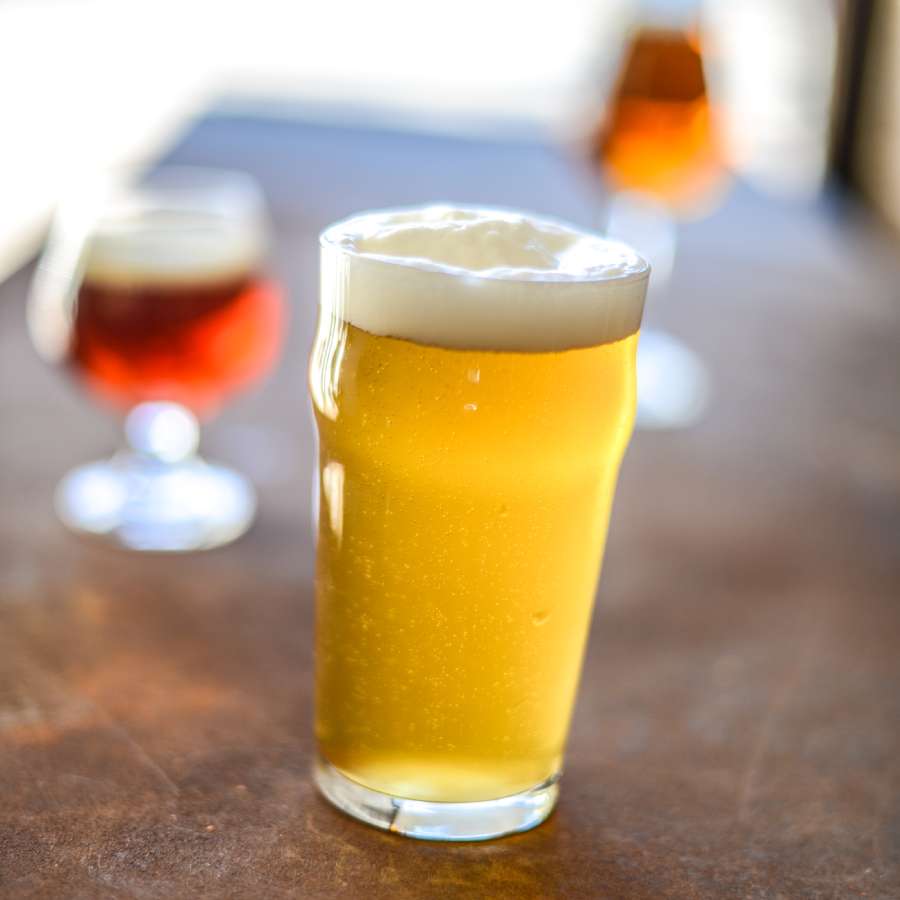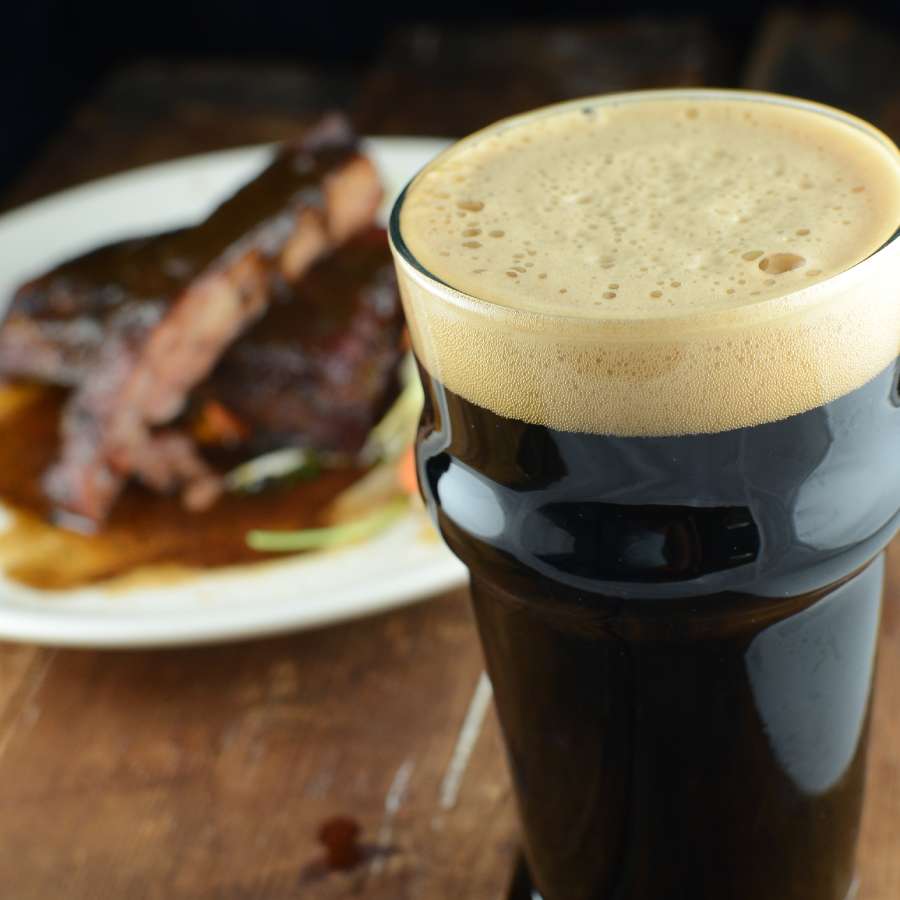Have you heard the story about how IPA was invented in the 1800s because brewers were trying to figure out how to make a beer that could be shipped to India without going bad? They figured out that increasing the amount of alcohol and hops would help preserve the beer and a new style was born.
This story is not true. By the time I started working in the beer industry this myth had been widely debunked yet still spread. Those of us who know try their best to set the record straight.
In the same way it’s important to re-explore history, it’s valuable to re-examine how we talk about beer basics. Beer basics include ingredients and process, styles and flavors and pairing beer with food–what people need to know to start their journey as a beer geek.
(More: Nationwide List of To-Go Beer Options by Breweries)
As craft beer has made great strides, the topics and techniques we follow to educate should too. As a craft beer and sensory consultant, international judge and Master Cicerone©, my mission is to help drive the craft beer movement forward. And I keep coming back to this thought: It’s 2020, and I think it’s time to re-think beer basics.
Examining how we talk about beer basics isn’t just about eliminating inaccuracies but making sure we’re mindful about how we talk about beer basics to make sure we’re not overwhelming people who are new to it.
Homebrewing and Wine’s Influence on Early Craft Beer
The exact origins of the beer basics we share now are unknown. This being said, we can see clear influences from both homebrewing, and wine appreciation.
Although beer has been around for thousands of years, the way we currently talk about it has its origins in the late 70s homebrewing movement. Inspired by foreign beers and the writings of Michael Jackson, fine folk across America started making a range of beer styles at home. These are the roots of craft beer.
Those days, if you were into craft beer, you were either a homebrewer or a friend of a homebrewer. It’s therefore understandable that much of our jargon in beer is highly technical. Think IBUs. This is a technical specification and, yet, it’s a measurement that’s often requested by beer drinkers. By contrast, wine or spirit drinkers are not seeking out and sharing technical specs on their respective beverages, apart from ABV, which is required by law.
(More: Helping Our Craft Brewing Community During the COVID-19 Pandemic)
Meanwhile, the wine influence on beer basics can be found in how we divide beers and pair them with food (both of which are explored below) as well as the basic tasting and palate cleansing technique we use for beer. Wine has also informed how we choose the best glass to highlight the attributes of different beer styles, for example, the long narrow shape of a pilsner glass mirrors the champagne flute, which was designed in the 1750s to preserve carbonation and concentrate its delicate aromas.
It makes sense that we would borrow from wine; the North American wine renaissance pre-dates the craft beer movement by about 10 years. At this time, there was an increased interest in local wine production as well as wine education. By the time craft beer came along, a lot of the research had been done with regards to the best way to enjoy wine and this information could easily be adapted to beer.
It’s now 40 years later. Our understanding of beer has grown a lot, as has the variety of beers that we have access to. Although it would be more convenient to keep things the way they’ve always been, it is worth examining beer basics to see if there’s a better way to communicate them.
 The Division of Ales vs. Lagers
The Division of Ales vs. Lagers
One aspect that I believe deserves scrutiny is the division of beer into ales and lagers. Of course, it’s true that most beers are either ales or lagers. It’s also true that, for brewers and homebrewers, it’s important to know if a style is an ale or a lager. From a beer lover’s perspective, though, is it that helpful?
The ale vs. lager question is one that comes up often with beginners. When it does, it’s easy to share a basic explanation, but this involves details on yeast types and fermentation temperatures and can cause more confusion than clarity. It’s highly technical information. Have you ever successfully explained to someone the difference between ales and lagers? I mean, have you ever walked away thinking: “From now on, this person will now easily be able to tell if any beer they drink is an ale or a lager.”
(Related: A Sour Beer Pickle: Can American Brewers Better Define this Beer Style?)
Perhaps the instinct to divide beer into two categories comes from wine, which is always divided into red and white. The thing about red vs. white wine is that it’s an easy distinction, even for beginners, and these categories inform glassware selection, food pairing, and personal preference. Most wine menus list their wines in these categories.
The issue with dividing beer into ales and lagers is that it doesn’t inform personal preference. Some people indeed prefer lagers, but these people are usually referring to golden lagers, which are just one of many lager expressions. It’s much more common to hear people ask, “What do you have that’s hoppy?” or “Do you have any dark beers?” rather than, “Which ales do you have?”
There’s a reason we don’t see this division on menus; it’s not useful. And, yet, we still talk about these two categories as if they’re critical to beer enjoyment. Why not create a few more categories that better reflect the overall flavor profiles of beer?
Without any accepted beer categories, menus are a hodgepodge. Some divide by bottle vs. draught, some by region, some by mood or key descriptor, and some not at all. Wouldn’t it be great if there were standard categories, like the ones used in wine, that would allow drinkers to quickly identify which beers they might like? When I was writing my book, I spent a lot of time thinking about which categories might be useful and landed on four that work well: Refreshing, Mellow, Striking and Captivating.
If you check out the CraftBeer.com Beer Style Guide, you’ll see it offers six similar sensory categories, like Sour, Tart & Funky, Crisp & Clean and Dark & Roasty. These types of categories reflect what a drinker might be in the mood for and serve as a more informative guide than simply ales vs. lagers.
 Examining How to Talk About Beer and Food Pairing
Examining How to Talk About Beer and Food Pairing
Another area I propose we re-examine is how we talk about beer and food pairing. In this area, there are a lot of different theories and approaches but the one that comes up the most is cut, complement or contrast. This is likely an expansion of the common “complement or contrast” theory used for food pairing with wine. The idea is that you can pair a wine with food that has similar traits (complement) or use a food item or ingredient that completes the wine by adding a taste or quality that is not present in the wine (contrast).
(More: Beer and Food Pairing Guide)
The issue in transferring this theory to beer is that beer has a much wider spectrum of tastes and flavors. Wine relies, for the most part on a balance of alcohol, acidity, tannins and sweetness. Beer, however, can have any of a combination of tastes, including those listed for wine, as well as bitterness, salt and umami, and a much broader range of flavors. The “cut, complement or contrast” approach oversimplifies the large potential there is for flavor interactions.
Again, in an attempt to keep things simple, the guidance can cause confusion. Cut, complement and contrast are easy to explain and can result in solid pairings. They can, however, backfire horribly as they only take into account a narrow slice of the beer’s flavor profile. These three techniques work best when they are used together. This combined method is one of many approaches to food pairing.
As with beer categorization, food pairing is an area that has inspired a lot of theories and techniques. So much so that it’s easy to get lost in all of the different instructions. Again, this will be a process of trial and error, finding a system that is both effective and easy to explain.
The craft beer landscape has evolved so much since its inception. We now have access to an unending variety of beer styles and flavors to enjoy and share. Beer is a complex beverage and our responsibility as beer lovers is to communicate its many qualities as simply and as accurately as possible.
The more we hone the way we communicate beer basics, the more people we can welcome to the delicious world of craft beer appreciation. This isn’t a change that will occur overnight, but rather an evolution. Through experimentation and critical problem solving, I’m confident we can settle on a new way to talk about beer basics. Let’s start exploring possibilities!
CraftBeer.com is fully dedicated to small and independent U.S. breweries. We are published by the Brewers Association, the not-for-profit trade group dedicated to promoting and protecting America’s small and independent craft brewers. Stories and opinions shared on CraftBeer.com do not imply endorsement by or positions taken by the Brewers Association or its members.


Share Post